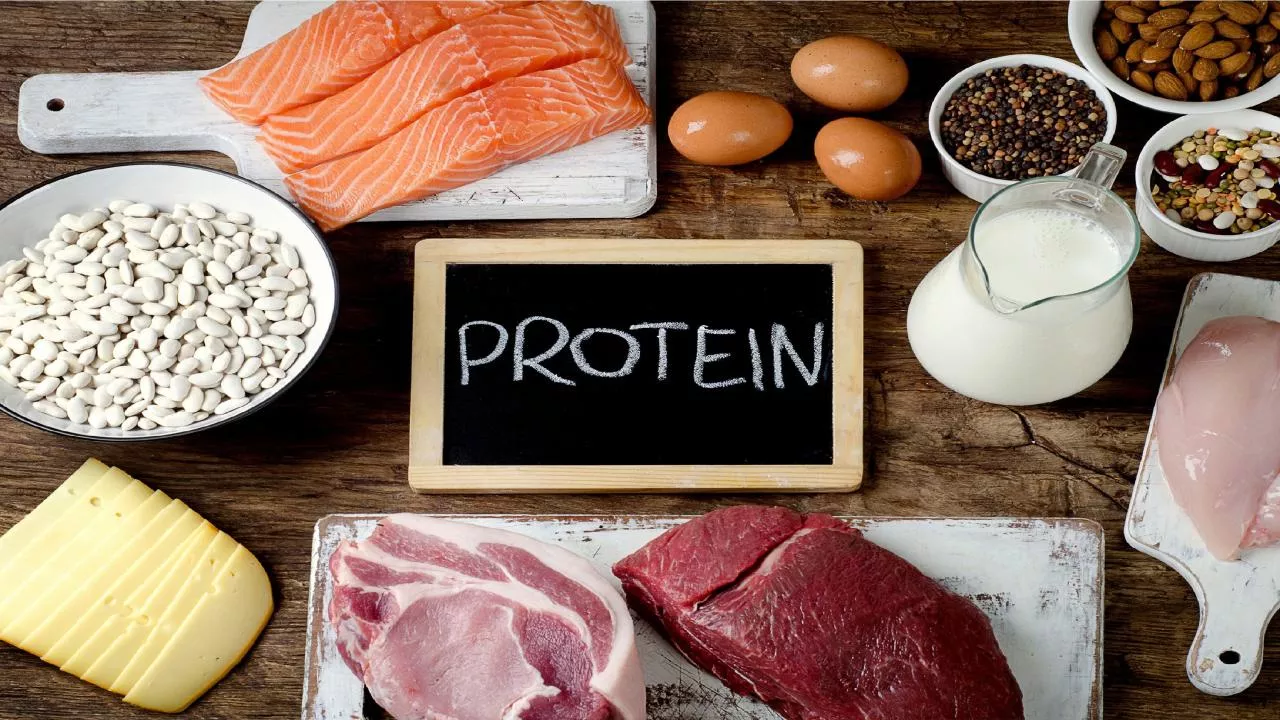

Protein Builds and repairs body tissue Provides some energy There are 4 calories per gram of protein Protein Composed of chains of amino acids Common Amino Acids Alanine Glycine Isoleucine Leucine ID: 918862
Download Presentation The PPT/PDF document "PArt 1: Amino Acids and Proteins" is the property of its rightful owner. Permission is granted to download and print the materials on this web site for personal, non-commercial use only, and to display it on your personal computer provided you do not modify the materials and that you retain all copyright notices contained in the materials. By downloading content from our website, you accept the terms of this agreement.
Slide1
Slide2PArt 1:
Amino Acids and Proteins
Slide3Protein
Builds and repairs body tissue
Provides some energy
There are 4 calories per gram of protein
Slide4Protein
Composed of chains of amino acids
Slide5Common Amino Acids
Alanine
Glycine
Isoleucine
Leucine
Proline
Valine
Phenylalanine
Tyrosine
Aspartic
Acid
Glutamic
Acid
Arginine
Histidine
Lysine
Serine
Threonine
Cysteine
Methionine
Aspargine
Glutamine
Tryptophan
There are 20-22 amino acids in the human body.
Slide6Amino Acids
Essential
The body
cannot
manufacture.
Must be obtained from food.
Non-essential
The body
can
manufacture from the essential amino acids.
Slide7Amino Acids
Essential
There are 9 essential amino acids.
Nonessential
There are 11 non-essential amino acids.
Slide8Amino Acids
Essential
Nonessential
Alanine
Glycine
Isoleucine
Leucine
Proline
Valine
Phenylalanine
Tyrosine
Aspartic
Acid
Glutamic
Acid
Arginine
Histidine
Lysine
Serine
Threonine
Cysteine
Methionine
Aspargine
Glutamine
Tryptophan
Slide9What type of foods do we eat to obtain the amino acids our body needs to be healthy?
Protein
Slide10What foods are good sources of dietary protein?
Slide11Protein
Food group in MyPlate
Meat
Poultry
Eggs
Seafood
Nuts
Beans
Seeds
Soy Products
Slide12Protein
Other roles of protein:
Catalyst
s
Messengers
Structural Elements
Buffers
Fluid balancers
Immunoprotectors
Transporters
...and more
Slide13How much protein should I consume each day?
Slide14What is an ounce-equivalent?
1 ounce of lean beef
1 ounce of tuna
1/2 ounce of nuts
1 slice of deli meat
1 egg
1/4 cup cooked beans
Slide15PArt 2:
The Science of Cheesemaking
Slide16Eggs & Ham
Cheese
Hummus
Chickpeas
& Almonds
Turkey
& Cheese
What do these healthy snack boxes have in common?
Slide17Composition of Milk
Slide18PArt 3:
Complete and Incomplete Proteins
Slide19Complete Proteins
Contain all 9 essential amino acids
All animal-source foods are complete proteins.
A few plant-source foods are complete proteins.
Slide20Incomplete Proteins
Plant-based foods that are low in, or missing one or more essential amino acid.
Slide21Vegetarian Diet:
A diet excluding meat.
How can protein requirements be met with a vegetarian diet?
Slide22Vegan Diet:
A diet excluding all animal-source foods.
How can protein requirements be met with a vegan diet?
Slide23Complementary Proteins
Combining a grain and legume to get all of the essential amino acids.
Slide24Complementary Proteins
Peas
Brown Rice
8g
5g
Protein:
Protein:
per serving
per serving
High in:
Cysteine
Methionine
Low in:
Lysine
High in:
Lysine
Low in:
Cysteine
Methionine
Slide25Protein Deficiency
Causes:
Stunted growth
Lower resistance to disease
Unhealthy weight loss
Exhaustion
More common in underdeveloped countries.